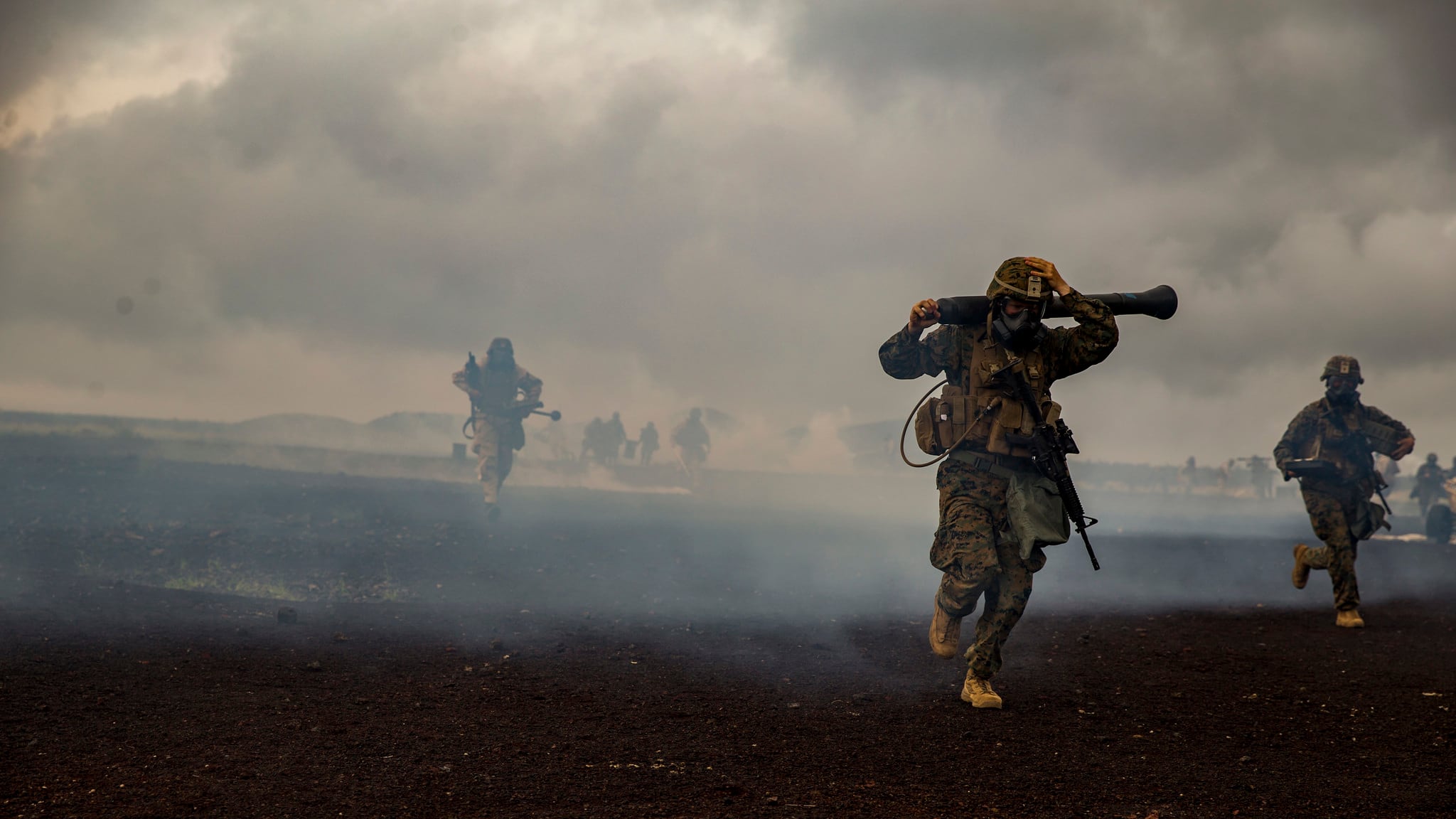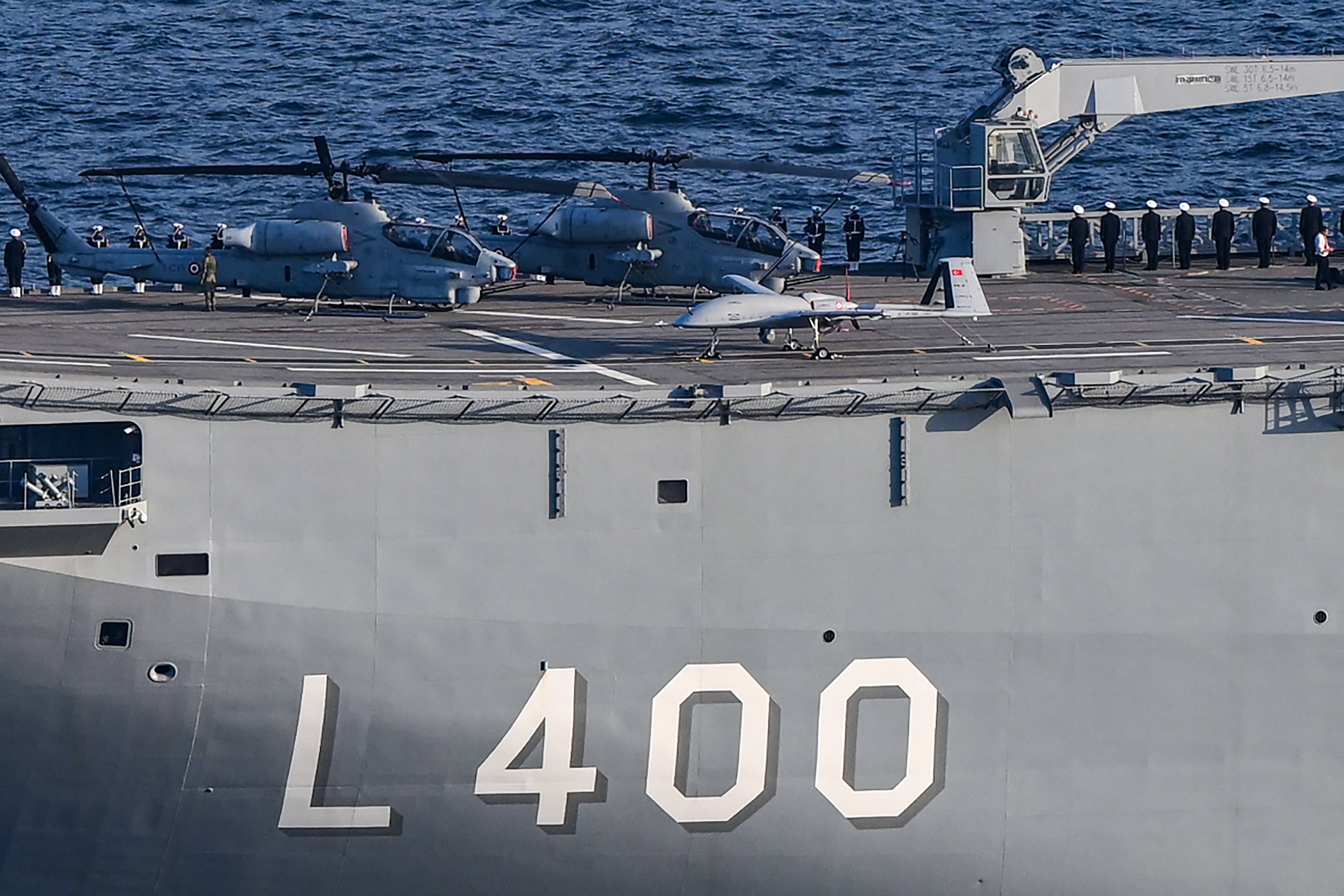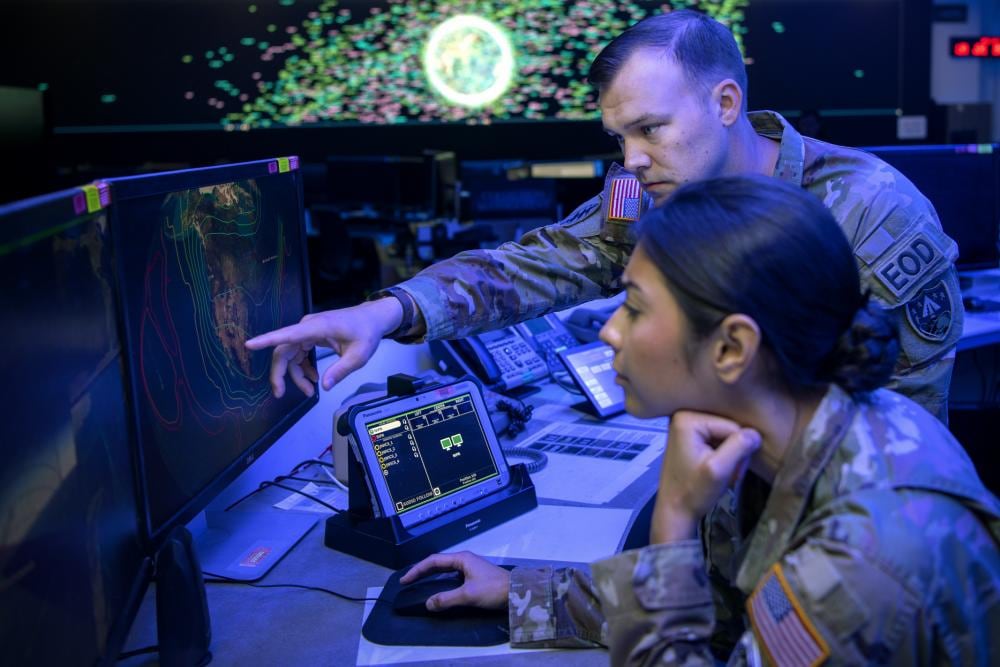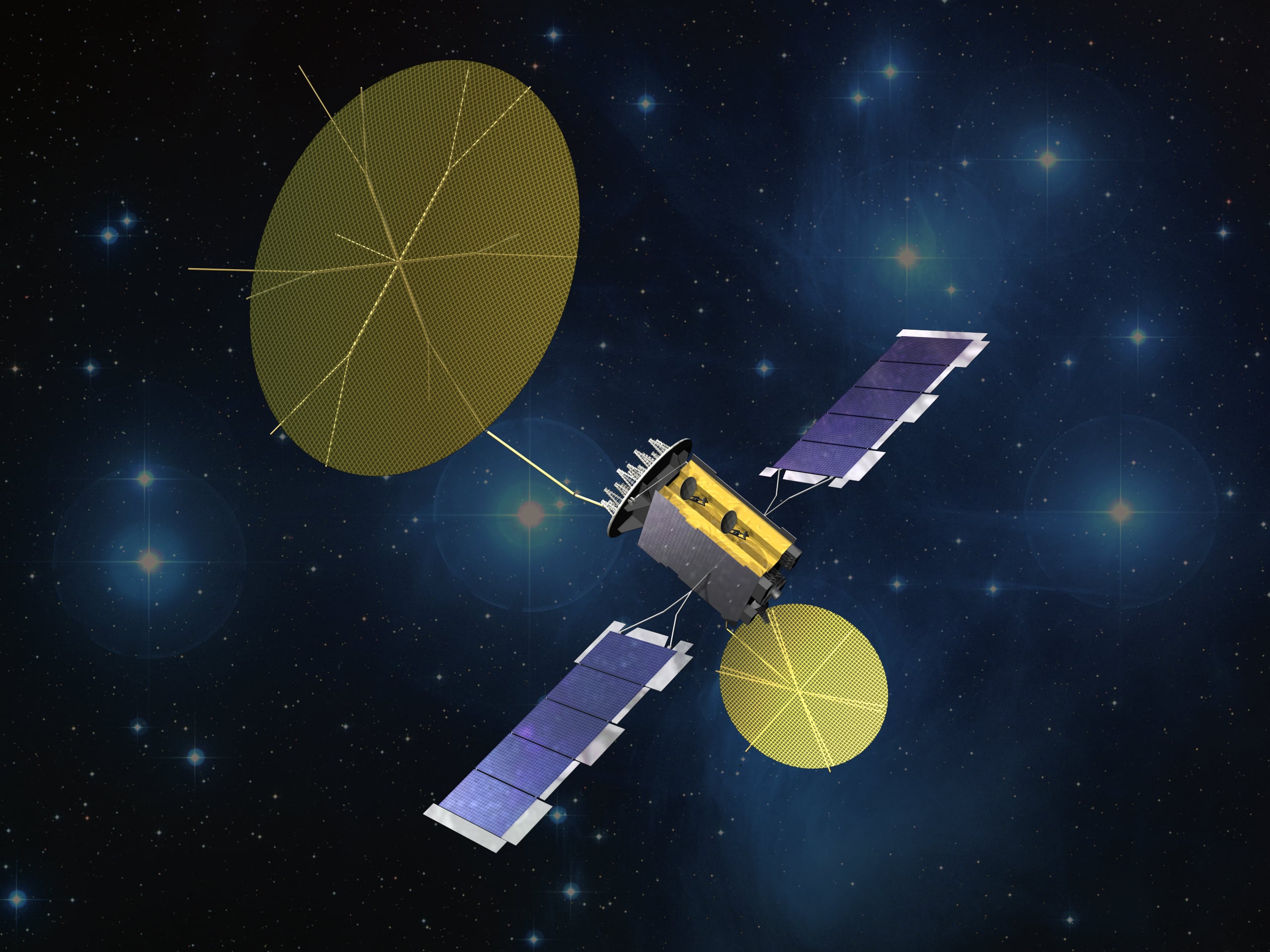CHRISTCHURCH, New Zealand — With South Korea’s KF-21 fighter jet nearing mass production, the country is looking to incorporate unmanned technology that can operate alongside the Air Force’s fleet.
The military’s growing interest in manned-unmanned teaming comes amid a declining pool of 18-year-old conscripts and as relations with neighboring North Korea worsen.
Korea Aerospace Industries, a producer of various drones and crewed fighters, including the KF-21 Boramae and FA-50, is one of the companies leading the national effort.
In an exclusive briefing with Defense News, a KAI executive outlined the company’s four-phase road map to provide manned-unmanned teaming capabilities to the South Korean military.
“We have a very ambitious plan to create a system of systems for the future, and this is a combination of manned aircraft like the KF-21 and FA-50, together with unmanned combat vehicles as unmanned fighters, and also small-sized UAVs,” the executive said on the condition of anonymity, as the individual was not authorized to speak to the press.
South Korea’s Air Force plans to acquire both single-seat and twin-seat variants of the 4.5-generation KF-21, with first delivery scheduled for June 2026. The twin-seat jet, apart from its training role, is expected to perform manned-unmanned teaming, or MUM-T, in its Block III configuration. This would involve a pilot in the back seat — or perhaps artificial intelligence — controlling drones.
The KF-21 was designed so users could equip it with new technology even after production, and the intention is to eventually develop a fifth- and sixth-generation variant. This aim falls under what KAI calls the next-generation air and space combat system, a sophisticated and linked network of sensors and platforms such as satellites, airborne early warning aircraft, crewed fighter jets and drones.
Four phases
KAI is already implementing the first phase of its MUM-T road map, which began in 2023 and is to conclude next year. It involves the company and the Air Force collaboratively developing technologies to make MUM-T a reality with a helicopter and small, air-launched unmanned aerial vehicles. Once KAI proves the concept and technology for high-capacity communications and artificial intelligence, it will transition to more capable UAVs — which the company calls adaptable aerial platforms — to operate in conjunction with an FA-50 aircraft.
Although larger and possessing a longer endurance than the original air-launched UAVs, the recoverable “adaptable aerial platforms,” or AAPs, will not be excessively high-tech because they need to be affordable, the executive noted.
The second phase, to take place from 2025 to 2028, will culminate in a technology demonstration whereby an FA-50 testbed shows whether it can simultaneously control up to four adaptable aerial platforms. The demonstration is to feature AAPs acting as decoys to spoof the enemy; conducting electronic warfare with an onboard jammer; carrying out intelligence, surveillance and reconnaissance missions with an electro-optical/infrared payload; or performing strike missions with its own warhead.
The third phase, to conclude by 2037, will transition increasingly capable MUM-T technologies from an FA-50 to a twin-seat KF-21. Simultaneously, KAI is expected to reach the engineering and manufacturing design stage for an additional type of combat drone acting as a loyal wingman to the piloted aircraft.
A single KF-21 would control up to four of the combat drones. In turn, each loyal wingman would command four AAPs. This essentially means the combat power of a single KF-21 would expand to 20 unmanned aircraft.
Work is already underway on such combat drones, as the government’s Defense Acquisition Program Administration chose Korean Air Aerospace Division in August 2022 to develop a new loyal wingman. Development of the so-called KUS-LW drone commenced in November 2021.
“The squadron of UAVs will not only support and escort a manned aircraft, but will also be able to perform its own missions including surveillance, electronic interference tactics and precise shooting,” according to Korean Air.
Finally, the fourth phase, from 2038 onward, in which KAI hopes to have sufficiently mastered MUM-T to attain a true system of systems: This is the fruition of the next-generation air and space combat system.
“It’s a kind of compressed development,” the KAI executive said regarding the four-phase process. “We believe we have to move, otherwise we will miss the chance. This time we have to act to get in front, utilizing the technology we have accumulated for the last 30 years.”
Indeed, South Korea’s defense and aerospace industry has the experience and capability to develop MUM-T capabilities, according to Douglas Barrie, a senior fellow for military aerospace at the London-based International Institute for Strategic Studies think tank.
“As with most nations, however, it is at a relatively early stage in exploring, researching and developing such capabilities. Much will also depend on the extent of near-term ambition,” he told Defense News. “Any approach that allows you to bolster your combat mass at reasonable cost, and with systems that might allow the acceptance of higher attrition rates, is going to be attractive.”
Artificial intelligence is a key part of this. Algorithms can outperform their human counterparts in terms of decision-making speed, as crews must await orders from air operations center, plus an AI-enabled network can produce a swift kill chain.
“Within a very short time, they [the AI and aircraft] have to exchange a huge amount of data, so secure communications and software … are necessary for this future battlefield. Eventually, AI command — in other words, AI pilots in the aircraft, maybe in the back seat, we don’t know — will replace some parts of the air combat center,” the KAI executive said. “With these very special capabilities and features of the future system, the AI can make a decision within a very short time frame. This short procedure will give us a huge advantage, considering our enemy is not well prepared for this future battlefield.”
Partnerships
South Korea and KAI are also looking for foreign investors.
South Korean Defense Minister Shin Won-sik visited the Middle East in early February, during which he met his Qatari, Saudi and Emirati counterparts to discuss defense cooperation and unmanned technology.
Meanwhile, KAI is seeking international partners as it develops the MC-X Orca multirole cargo aircraft. The aircraft has a maximum takeoff weight of 92 tons and is about 132 feet long — between the lengths of a C-130J and A400M. Anticipated roles for the MC-X include transportation, aerial refueling, special forces operations, space rocket launches, airborne early warning, medical evacuation and maritime patrol — as well as MUM-T.
If the project proceeds, production of the MC-X wouldn’t take place until as soon as 2035, a company spokesperson said at the Seoul ADEX defense exhibition last year.
“Our government is pretty much interested in having indigenous hardware, but there is a question when and how much they are willing to invest. So we are in discussion with our government, but at the same time we are looking for international partners interested in this idea of a multirole cargo aircraft. There are a couple of countries that would like to be partners in this initiative,” the KAI executive said, declining to name the countries.
The firm has previously tapped foreign sources to close gaps in its technological know-how. For example, in March 2021, the company signed a collaborative agreement with Israel Aerospace Industries for loitering munitions. In computer-generated promotional videos, KAI has shown IAI-style drones launched by Light Armed Helicopters and Surion choppers.
KAI also has export ambitions. The executive said there’s a potential export market for up to 800 KF-21 fighters over the next few decades, specifically citing Saudi Arabia and the United Arab Emirates as candidates.
And by demonstrating it can retrospectively integrate MUM-T capabilities onto FA-50 aircraft, the executive added, the company hopes to entice existing users like Indonesia, Iraq, Malaysia, the Philippines, Poland and Thailand to take advantage of the MUM-T technology.
“For the FA-50 and KF-21, we are not selling the current capability of the aircraft. We are at the same time trying to sell the value of this aircraft to do something else, something greater in the future, by giving them [potential customers] an idea of the MUM-T concept and a fifth-gen combat system — in other words, a system of systems,” the KAI executive said. “There is high value once they purchase the FA-50. With the capability, gradually year by year, they can operate this aircraft to be perfectly prepared for the future battlefield.”
Certainly KAI’s ability to achieve its four-phase MUM-T plan is possible, Barrie noted, but it’s not written in stone.
“In part, this will depend on how far and how quickly South Korea wants to develop the technology, combined with the kinds of roles associated with the uninhabited elements of any teaming architecture,” he said. “While ambition is laudable, it also needs to be realistic.”
Gordon Arthur is an Asia correspondent for Defense News. After a 20-year stint working in Hong Kong, he now resides in New Zealand. He has attended military exercises and defense exhibitions in about 20 countries around the Asia-Pacific region.








